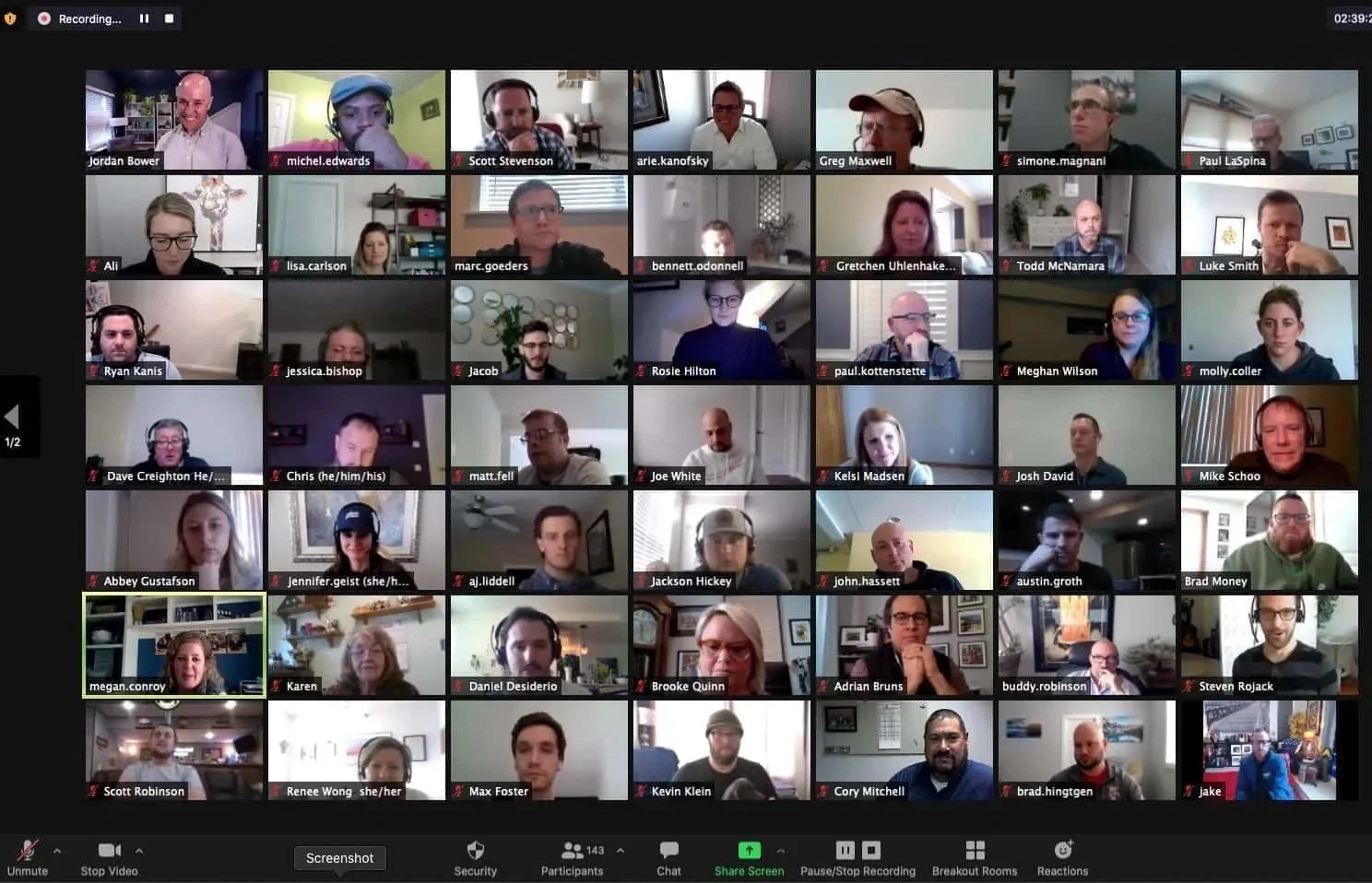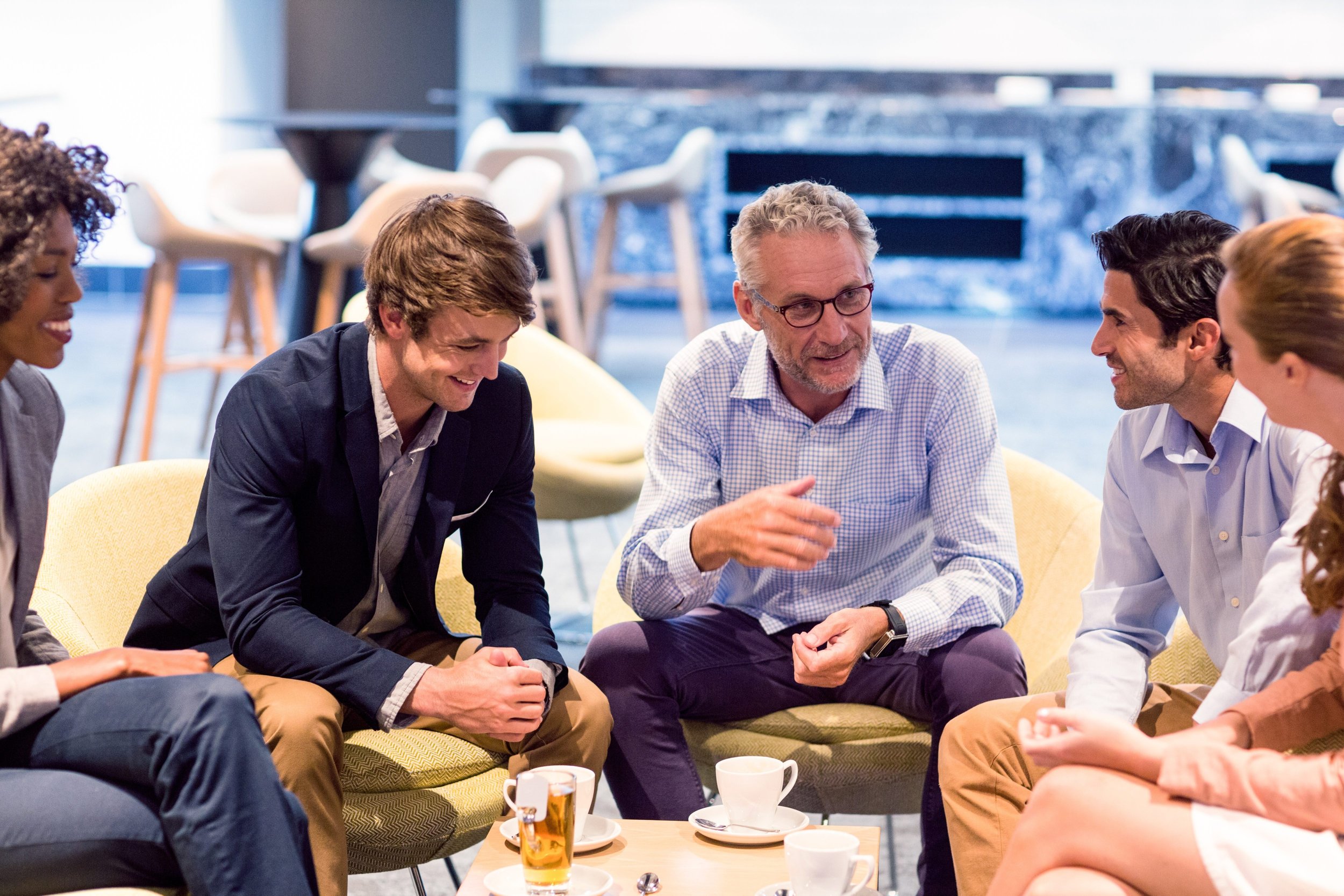Backcast Your Future
A Visionary Planning Workshop for Executives, Strategy Leaders and Innovation Teams
Backcast Your Future is a unique facilitated strategy workshop that will help you leadership team define a visionary path to a brighter future.
Working together, your team will follow a structured innovation process that will lead you to immediate, tailored and outside-the-box solutions to your real business challenges—along with an action plan to implement them.
We work with teams throughout North America and the English-speaking world.



What You Will Get From a Future Backcasting Workshop
Learn a brilliant future-focused innovation process that will permanently transform how you approach business planning
Apply that brilliant planning process to solve a real challenge that your organization is facing now.
Generate remarkable, outside the box solutions that were not visible to you before you started the process
Develop a tailored action plan to incorporate your solutions at varying levels of organizational change/disruption and budget
Receive insightful, personalized and practical guidance from a world-class systematic and creative thinker
Goals and Outcomes of your Future Backcasting Workshop
The Future Backcasting Workshop is a 1-2 day in-person learning experience, facilitated by Jordan Bower:
Start with a challenge in your business that needs an innovative solution
Untangle the problem to see what’s not working and why
Learn the Future Backcasting Process, review best practice examples
Dream up an optimal future—and work backwards with your team to begin to invent the steps necessary to get there
Walk away with a customized plan that guides your team’s next steps
Get tailored guidance from a remarkable creative thinker-facilitator
Future Backcasting Workshop for Strategy Leaders & Planning Teams
Learn an innovative problem solving process and apply it immediately to find remarkable solutions to your real leadership challenges.
DESIGNED FOR:
Executive Leadership Teams;
Business Planning Teams;
Change Management/Leadership Teams
FORMAT:
In-Person.
DURATION:
Standard workshop is
1-2 full days.
IDEAL GROUP SIZE:
5-15 people
What is Future Backcasting?
Future Backcasting is an innovation process that has been used by remarkable leaders in science, technology and systems change for many years. The concept is very simple to understand. Backcasting is the opposite of a much more familiar process called Forecasting:
Forecasting predicts the likelihood of events in the future based upon past data and events.
Backcasting starts from an optimal future and then “works backwards” to engineer the missing steps.
Both Forecasting and Backcasting are concerned with events in the future. However, Forecasting will always be limited by plausibility. In other words, Forecasting anticipates that things that have happened before will happen again—it takes current beliefs, biases and trends and projects them forward to create a vision of the future.
Backcasting, on the other hand, is not limited by plausibility. Backcasting begins with the presumption of having already solved the problem—however implausible. Once the process is assumed to have been solved, Backcasting invites you to consider what had to happen along the way for you to succeed. This can then help you prioritize which innovative steps are necessary/essential, even if they don’t yet exist.
What makes Future Backcasting relevant now?
Simply put, right now, the future is fundamentally unimaginable. As a result, it is fundamentally impossible to predict the future by looking at backwards-facing data, as in Forecasting. The only intelligent alternative is to innovate the future proactively by using an approach like Future Backcasting.
Without doing so, every organization—and person—is resigning themselves to letting the future happen to them. Every organization that tries to Forecast the future exposes themselves to the reality of needing to pivot when the unimaginable inevitably happens.
How does Future Backcasting work?
Future Backcasting is a structured process that is similar in some ways to Design Thinking—which, over the last few years has become the pre-eminent innovation process on the planet. Design Thinking has been used in a wide range of product and system design applications, including service design, interaction design, UX design and more. Design Thinking involves a series of steps that guide the overall creative process:
Frame a Question—Identify a driving question that inspires others to search for creative solutions.
Gather Inspiration—Inspire new thinking by discovering what people really need.
Generate Ideas—Push past obvious solutions to get to breakthrough ideas.
Make Ideas Tangible—Build rough prototypes to learn how to make ideas better.
Test to Learn—Refine ideas by gathering feedback and experimenting forward.
Share the Story—Craft a human story to inspire others toward action.
Source: What is Design Thinking? IDEO
Similarly, Future Backcasting involves a series of steps that guide an overall creative process. And, like Design Thinking, Future Backcasting begins by imagining a future state and working backwards from the outcome.
The major difference between the two processes is that Future Backcasting can be applied to a much more robust set of organizational problems. For example, Design Thinking can apply to orchestrating a new website or an app—a tactical outcome that is made tangible in the process. Future Backcasting can apply to systems change on a larger scale. For example, in the context of overall ecological sustainability. When it comes to natural systems change, Backcasting can be used to ask “what needs to happen to achieve a sustainble futur”—without directly leaping to the design of tangible interventions.
In an organizational context, Future Backcasting can be used to ask: “how can our organization be more adaptable or innovative”. The outcome of such a process may determine the need for tangible products or interventions. So we can say that Design Thinking is a subset of Future Backcasting Future Backcasting can apply to products, websites, and apps; it can also apply to business systems, organizational cultures, and communications challenges. In fact, Future Backcasting can be applied to a full range of future-oriented leadership goals. It can usurp Forecasting in every context.
The steps of Future Backcasting are:
Start by developing a vision of an optimal future—Pinpoint specific improvements in either/both functional (tangible) or interpersonal (emotional/psychological) terms
Compare this Future Vision to the current state—Identify the gaps between how things are now and how things could be without jumping to what is plausible/likely
Dream up creative solutions—Looking backwards from the end, develop insights and strategies that bridge the gap between there and here.
Decide on priorities—Establish next steps that move towards the desired outcome the fastest
Begin again from Step 1—Future Backcasting is a cyclical process that enables continuous evolution
What skills and abilities does Future Backcasting require?
Future Backcasting is an imaginative process. It can not be followed step by step, like assembling IKEA furniture. The steps listed above guide the overall process—but they do not guarantee the result.
Imagination is one of the keys of the process. Here, we define imagination as the ability to see what does not exist. This can be understood in more familiar, creative terms: for example, dreaming up a solution that starts as a spark inside of someone’s mind. This is imagination. Imagination can also refer to a type of social skill—for example, envisioning how a stakeholder or a prospective customer might respond to a particular product or message. This, too, requires the cognitive function called “imagination”.
We need these varying definitions of imagination in order to use Future Backcasting to its potential.
A second key to Future Backcasting is the ability to change. By nature, Future Backcasting is a disruptive process—it sets aside “what is” to help you imagine “what could be”, plotting out a route to invent something that is not yet visible. This is a prototypical transformation—taking one thing that currently exists and putting it into the form of something else.
This ability to change is extremely sophisticated. Among other things, it requires the ability and willingness to confront fear—because very significant innovation or change triggers fear inside of us. This ability to change further requires a set of interpersonal skills, including courage, insight and vulnerability. These interpersonal dynamics are inseparable from the Future Backcasting process; in other words, it is impossible to invent without the willingness to go through the fear of change.
I bring these topics up immediately to illustrate that Future Backcasting works on multiple levels at once. It is not just a functional invention process; it is more than engineering a product or system improvement. At the same time, it is also an innovation in human dynamics—meaning in the overall psychology and emotional narrative of a thing. In this way, Future Backcasting can be used as a profound tool in organizational purpose and culture; it can transform how people work, act and think.
All of this is part of the disruptive Future Backcasting process. As a result, it is imperative that Future Backcasting is not trivialized as Forecasting—just backwards. Using Future Backcasting to its potential requires an imaginative leap to a world that does not yet exist.
This is an artistic movement—a creative jump that is mostly unfamiliar in business, except for a few notable and shining examples. With the reality of the world today, it is clear that many or most business leaders will need this skill; otherwise, they will be stuck in a cycle of constantly copying others—doomed to a race to the bottom.
Learning Future Backcasting can be transformative in that it can help you get outside the box. In a sentence, this is the overall goal of the Future Backcasting workshop.
Jordan’s Past Workshop Clients
Jordan Bower has facilitated workshops for more than 150 organizations from around the world. His clients include:
“We have seen immediate improvement in all our communication, from how we tell the story of our founders to how we express the vision and value of our product. Jordan’s workshop delivered impact from our executives to individual contributors.”
— Chief Revenue Officer, King’s Hawaiian
Meet Jordan Bower.
A dynamic lateral thinker, expert group facilitator and accomplished business storyteller, Jordan Bower has been teaching the art, craft and science of strategic storytelling in business for nearly fifteen years.
Jordan has delivered more than 150 storytelling workshops to organizational clients, including tech companies like Autodesk and Mozilla, large scale corporations like King’s Hawaiian and Canadian Tire, as well as many groups across small and medium-sized business, non-profits and the public sector. As a keynote speaker, he has delivered talks and workshops at conferences and events in North America, Europe and Asia.
Jordan often supplements his workshops with transformational coaching, consulting and advisory engagements. He is based in Vancouver, Canada, where he still enjoys very long walks.
Get in touch with Jordan
Let’s schedule a 30 min consultation to discuss your group, your goals, and how I might be able to help.






































